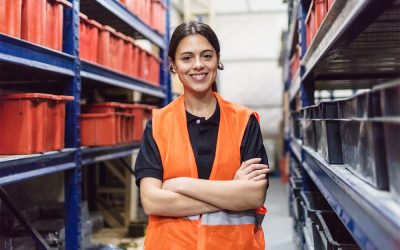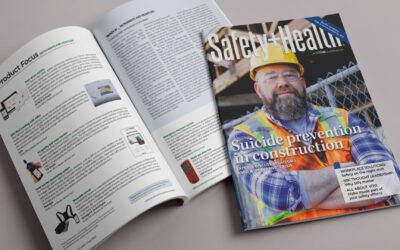The holiday season is here and every retailer, from e-commerce giants to local mom and pop shops, is in the throes of their annual hiring influx to handle the holiday rush. Furniture stores, electronics and appliances, health and personal care, clothing and accessories, sporting goods, you name it –– every industry, everywhere, is hit with more demand. And with such a major increase in demand, employers must respond with a major increase in seasonal workers.
In 2018, the holiday season brought a seven percent increase in base employment, creating nearly 600,000 additional jobs. In 2019, Amazon alone hired nearly 200,000 temporary workers for the season. Last year, the retail giant brought on 100,000, and ahead of this year, they planned on bringing in another 150,000 additional workers to meet the seasonal demands.
Such evergreen employment opportunities are a win-win for retailers and their seasonal employees, as retailers gain capability of meeting their expansive demands and employees get a few extra paychecks during a bad year for unemployment.
But there’s a darker side to the seasonal rush that needs addressing: work-related injuries.
A common, and potentially dangerous, trait that many new workers have is inexperience. Inexperience in a new facility, inexperience with heavy lifting, or inexperience performing very physically taxing tasks for extended periods of time. According to research from the Toronto-based Institute for Work & Health, employees in their first month on the job have more than three times the risk for a lost-time injury than workers who have been at their job for more than a year.
Here at StrongArm, we’ve witnessed this impact on workers first-hand, with average Safety Scores — a proprietary numerical ranking from 1-100 for a worker’s daily safety — dropping and lift rates increasing starkly during the season.
An increase in ergonomic injuries is only part of the problem, too. With the COVID-19 pandemic still making its rounds, a rapid increase in personnel around the workplace introduces yet another layer of risk. The compounding challenges of the pandemic and shifts in consumer trends may make this one of the most challenging holiday seasons yet in terms of worker injuries.
What’s at risk?
Beyond the immediate damage that an ergonomic injury or a COVID-19 exposure can do to an Industrial Athlete™, there are long-lasting effects that need consideration as well. Without proper training or with lackadaisical risk-prevention regimens, every employees’ livelihood is put at risk. Enough bad bends and awkward twists can impair an Athlete’s body permanently, depleting their ability to perform physical jobs going forward. Furthermore, an uncontrolled outbreak of COVID-19 presents a number of risks to vulnerable groups, some being potentially fatal. If retailers are irresponsible during this seasonal rush, the consequences could be killer.

To the managers of these facilities, as well, careless injury prevention strategies present a number of threats to productivity. If your workers are injured and incapable of completing their tasks, the increased demands of the holiday season are put in jeopardy. It immediately defeats the purpose of hiring a seasonal worker if they can no longer complete the job you need them to.
On top of that, losing workers to preventable injuries costs money. Beyond a reduction in productivity, seasonal workers are often entitled to the same workers’ compensation as full-time employees. If proper safety precautions are not taken, money can be lost from all aspects of the operation. The damage is three-fold: from the associates to the managers to the executives, irresponsible safety practices, this season more than any other, create risk.
What to do.
The most important thing to keep in mind ahead of hiring seasonal workers is to get ahead of problems before they get out of hand. Regardless of the season, companies that empower their employees through safety education and safety techniques will have a healthier and a more productive workforce, giving them a competitive edge.
The easiest way to do this is to put effort into education. Teach proper movement for the tasks you assign, and ingrain safe habits into the routine. Proper lifting techniques are essential for the physically intensive jobs required in retail warehouses, so ensure your employees understand the basic posture and form required to execute their work, and ensure they understand the dangers of performing their tasks in an unsafe manner. This way, no matter the situations they encounter, your Athletes will have an understanding of how to handle themselves in order to avoid injury. By getting ahead of these issues, you instill good habits before bad ones develop.
Another alternative to this is to introduce a safety wearable program. Safety wearables are easy to deploy and scale, and offer proactive interventions to prevent workplace injuries before they occur. The haptic (or vibrational) feedback feature of safety wearables informs Athletes in real time if they are endangering themselves with their lifting techniques and offers insight on resolutions. For example, in an ongoing safety program with Walmart, our FUSE safety wearables have driven injury reduction of more than 60% in some facilities.

These are also a proven solution for COVID-19 mitigation. Safety wearable devices can monitor the distance between Athletes and remind them to remain a safe distance apart. And if there happens to be an outbreak in your facility, they offer state-of-the-art contact tracing so you can maximize productivity while remaining safe.
At StrongArm Technologies, we understand these risks and want to help others recognize ways in which they can make their workplaces safer. In all that we do, we are working towards creating safer facilities and better futures for Industrial Athletes. At facilities like yours, inherently, and without intervention, the potential risk of injury can be high and unpredictable. And in peak season, the potential for risk rises exponentially. Workplace injuries cost money, cripple productivity, and threaten the livelihoods of good people. Your people. We can help.




